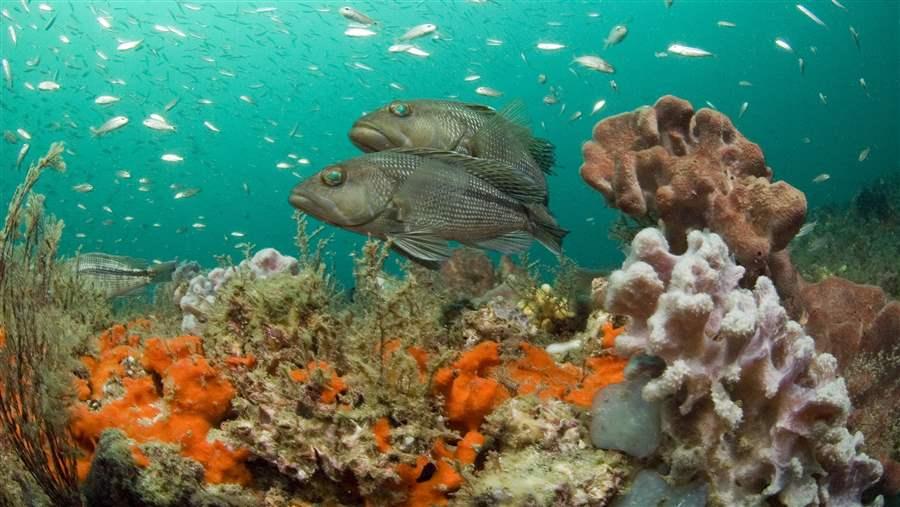Cheering NOAA’s Step Forward for Modern Fisheries Management
Ecosystem-based draft policy largely gets it tight
 NOAA
NOAAEcosystem-based fisheries management is a shift from focusing on a single fish population, or even groups of similar fish, when setting fishing rules. It is a big-picture approach that considers habitat, predator-prey relationships, and impacts from other factors, like climate change.
U.S. fisheries managers may soon have official support from the federal government in shifting toward a more modern, big-picture perspective when setting rules for fishing.
In a draft policy released in September, the National Oceanic and Atmospheric Administration’s Fisheries Service (NOAA Fisheries) said it “strongly supports” ecosystem-based fisheries management (EBFM), in which managers weigh existing data about where fish live, what they eat, what eats them, and what impacts they face from various threats, including climate change.
Historically, fisheries managers have considered only the overall strength of the target species when setting catch limits and other restrictions. The NOAA proposal—the first agencywide endorsement of EBFM—promotes use of science and careful attention to ecosystem considerations in decision-making while demonstrating that NOAA Fisheries is committed to modernizing and improving fisheries management.
The Pew Charitable Trusts submitted a letter Dec. 16 that largely supports the draft policy, suggests a few improvements, and encourages NOAA to put this modern method of fisheries management fully into practice.
A big-picture, ecosystem-based approach is a natural and necessary evolution in sustainable fisheries management. It gives managers the information they need to make better decisions, bringing us closer to our country’s goal of healthy ocean ecosystems that support sustainable fisheries and communities.
What is a policy?
Unlike a law or regulation, a policy cannot direct others with the force of law. Instead, it signals—to employees and contractors within an agency and to outside partners—the agency’s priorities and goals. NOAA Fisheries’ policy on EBFM will help scientists, managers, and others understand how the agency leadership wants fisheries management conducted and will encourage those applying EBFM to share their lessons learned and best practices. By finalizing the policy, NOAA Fisheries will support regional fishery management councils as they incorporate ecosystem considerations in their decisions.
How NOAA Fisheries can improve the EBFM policy
Although Pew largely supports the draft policy, a few improvements could make a big difference in ensuring that it is consistent and well-understood.
First, NOAA Fisheries should clarify that the “societal goals” of fishery management decisions include social, economic, and ecological factors.
Second, the draft policy should more clearly state why protecting forage fish is essential to the health of ecosystems as a whole. Forage fish, which are often targeted by commercial and recreational fisheries, are important components of the diets of other fish, birds, turtles, and marine mammals. Effective EBFM should recognize and protect the role these little fish play in healthy food webs.
Third, the policy should acknowledge that fish are responding to climate change by moving into different areas in search of cooler waters. These population shifts will create new fisheries and, potentially, challenges in how to manage them. Managers must use caution to ensure that any new fishing on these populations is sustainable from the start.
Finally, and perhaps most importantly, NOAA Fisheries must ensure that EBFM is fully included in other federal fisheries regulations. We are particularly concerned that NOAA’s proposed update of National Standard 1—an important rule that regional fishery management councils use to implement the Magnuson-Stevens Act, the nation’s primary fisheries law—does not yet include principles of EBFM. It is vital that National Standard 1 be modified so that it is consistent with this policy.
What’s next?
NOAA Fisheries will finalize this policy and will also develop a road map to guide councils and the agency in implementing it. We look forward to helping in advancing this comprehensive fisheries management approach to improve decision-making and ensure the long-term health of our oceans, coastal communities, and fisheries.
Ted Morton leads The Pew Charitable Trusts’ fisheries work at the federal level.











